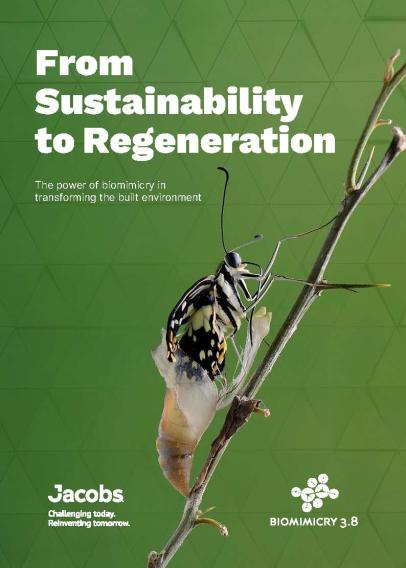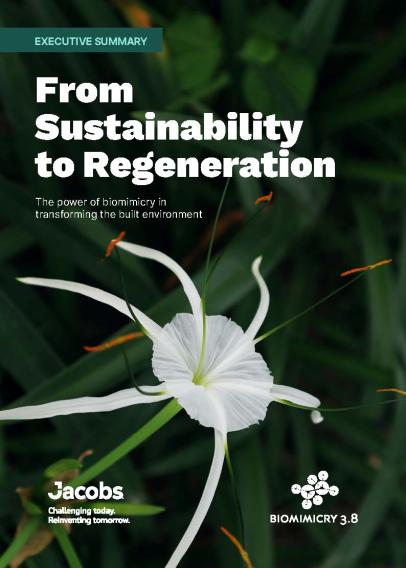

From Sustainability to Regeneration
The power of biomimicry in transforming the built environment
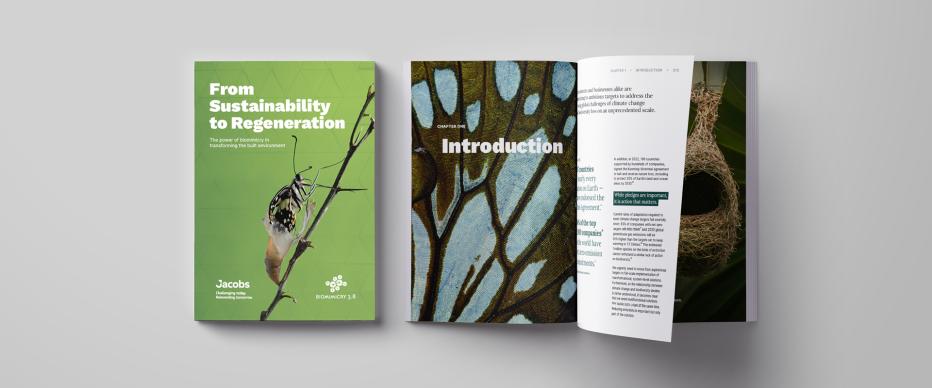
Over 3.8 billion years, evolution has yielded one of the most advanced, untapped, publicly available research and development labs on the planet. Having discarded more than 99% of species in the process, the remaining 1% provide innovative blueprints, recipes and well-adapted best practices to design, build and create.
It’s not wishful thinking to see the built environment as part of nature. Through biomimicry, the built environment can help recover ecosystem functions and services, eventually transforming humanity’s relationship with the rest of nature into one that’s reciprocal and beneficial.
In our latest paper, written in collaboration with Biomimicry 3.8, we invite you to open your mind and heart to the big picture, expand your thinking and discover how we can transform the ever-expanding built environment from a threat to climate stability and biodiversity to a showcase for a regenerative world.

Introduction
While pledges are important, when it comes to reversing climate change and nature loss, it’s action that matters — and our actions currently fall woefully short.
Governments and businesses are committing to ambitious targets to address the growing global challenges of climate change and biodiversity loss on an unprecedented scale. Despite some impressive statistics however, the current rate of action is falling woefully short of what it needs to deliver. On our current trajectory, 2030 global greenhouse gas emissions will be 55% higher than the targets set to keep warming to 1.5 degrees Celsius.[1]
As both a key contributor to climate change and a sector significantly impacted by a changing climate, the built environment presents an enormous opportunity for positive impact — on nature and for communities.
-
197
countries have endorsed the Paris Agreement [2]
-
34 %
of the world's top 2,000 companies have net zero emissions commitments [3]
-
93 %
of companies will miss their emissions reduction targets based on current trends [4]
-
196
countries have signed the Kunming-Montreal Agreement to halt and reverse nature loss [5]

Biomimicry: Learning from Nature
Over the period of 3.8 billion years, nature has found the most effective and efficient solutions to the vast majority of challenges we face.
Biomimicry is a design and innovation approach that learns from nature’s genius and applies its blueprints, strategies and best practices to improve and invent solutions that create the conditions conducive for all Life to thrive.
When applied to the built environment, biomimicry produces design solutions that mirror the life-supporting benefits, also known as ecosystem services, created by intact habitats. This results in facilities that positively contribute to the ecosystems in which they operate, as measured by the ecosystem services they produce, generating social and environmental benefits such as improved air and water quality, increased carbon sequestration and biodiversity. The aspirational goal is for buildings to function like local intact ecosystems, producing the same benefits as the wildlands next door.
“We need to stop being apart from nature and start being a part of nature.”
“When the forest and the city are functionally indistinguishable, then we know we’ve reached true sustainability.”

Applying biomimicry: An innovation pathway to positive impact for the built environment
The Positive Performance Methodology is an assessment and innovation methodology that embraces biomimicry as a pathway to more sustainable and regenerative design.
Developed by Biomimicry 3.8, the methodology presumes buildings — and whole cities for that matter — can and must function like nature. Using local intact ecosystems as a source of inspiration and the benchmark against which future performance is measured, it guides organizations and design teams to develop place-based, regenerative design solutions that deliver a wide range of performance outcomes for ecosystems, communities and businesses.

An overview of Biomimicry 3.8's Positive Performance Methodology

The value of nature-informed design
In addition to the environmental benefits, the need for nature-informed design is supported by a strong business case.
Continued inaction on decarbonization and climate change could cost the world $178 trillion in economic losses by 2070.[6] Conversely, nature positive pathways could create over $3 trillion in business opportunities and 117 million jobs in the next decade alone.[7]
Mandatory reporting of exposure to environmental risks is shifting the flow of financial capital in favor of businesses taking genuine action to lower their impact. Nature-informed design supports businesses to improve their environmental, social and governance (ESG) performance, thus reducing their impact, and deliver on commitments to other strategic initiatives such as the United Nations Sustainable Development Goals.
At an operational level, nature-informed design can help businesses generate immediate cost savings and operational efficiencies, unlock new areas of competitive advantage with suppliers across the supply chain and revitalize their social license to operate.
-
$ 44 T
global economic value generation that moderately or highly dependent on nature [8]
-
$ 3.64 T
reported global economic losses from climate and water related hazards between 1970 and 2019 [9]
-
$ 11 T
potential global GDP gains of limiting global warming to close to 1.5 degrees Celsius [10]

Conclusion
Achieving net zero emissions by 2050 and going beyond that—reaching a positive future—isn’t just an aspirational goal. It’s an imperative. Realizing it will require a fundamental shift in the way we think about, design and engineer the built environment.
Ecological balance and human progress are not mutually exclusive. They are intrinsically interconnected, and the design philosophies and innovations we choose to adopt today will define our future legacy.
As an approach and innovation pathway that delivers inherently regenerative solutions, biomimicry can help us create a future where the built environment is a catalyst for ecological regeneration, well-being and human advancement, setting new benchmarks for generations to come.
Meet our partner, Biomimicry 3.8
Biomimicry 3.8 is the world’s leading biological intelligence firm offering innovation services, strategic consulting, professional training, and thought leadership to support the development of sustainable and regenerative products, processes, places, and organizations. More information about Biomimicry 3.8’s innovation and consulting services, workshops, training, and featured Ted Talks can be found at Biomimicry.net
Introducing Project Positive
Project Positive is a group of organizations dedicated to raising the bar on what acting sustainably means — driven by a sense of urgency to move beyond arbitrary reduction goals, to science-based targets and actions that are generous to the ecosystems, employees and communities in which we operate.
The group has completed more than 20 large-scale projects so far, demonstrating that factories, headquarters, campuses, cities and urban developments can be redesigned to deliver ecosystem services, support ESG goals and compliance reporting, achieve a social license to operate, and elevate employee engagement and stakeholder trust.
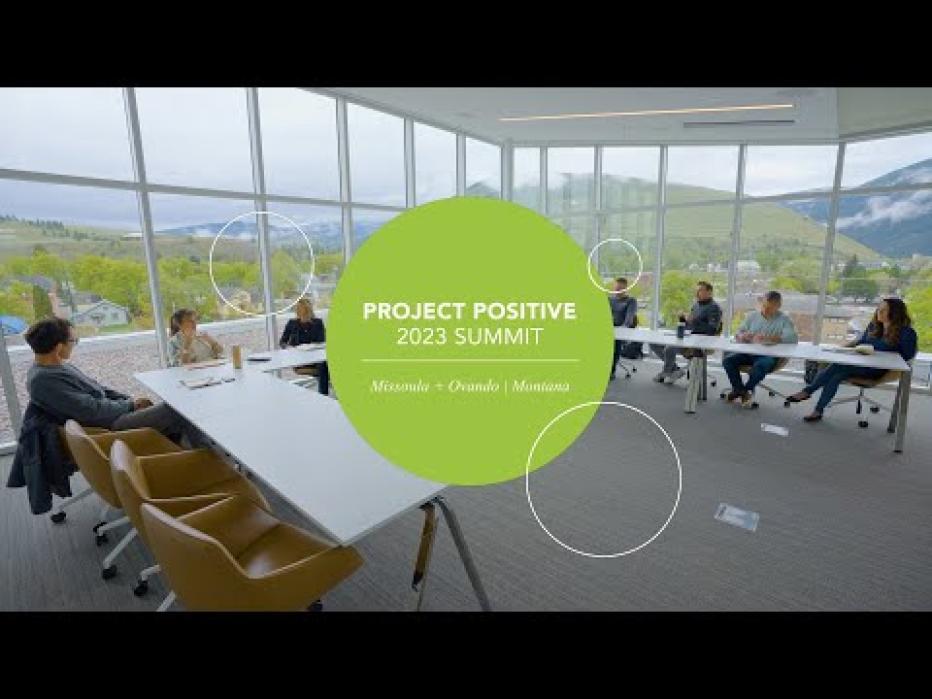
You might also like
-
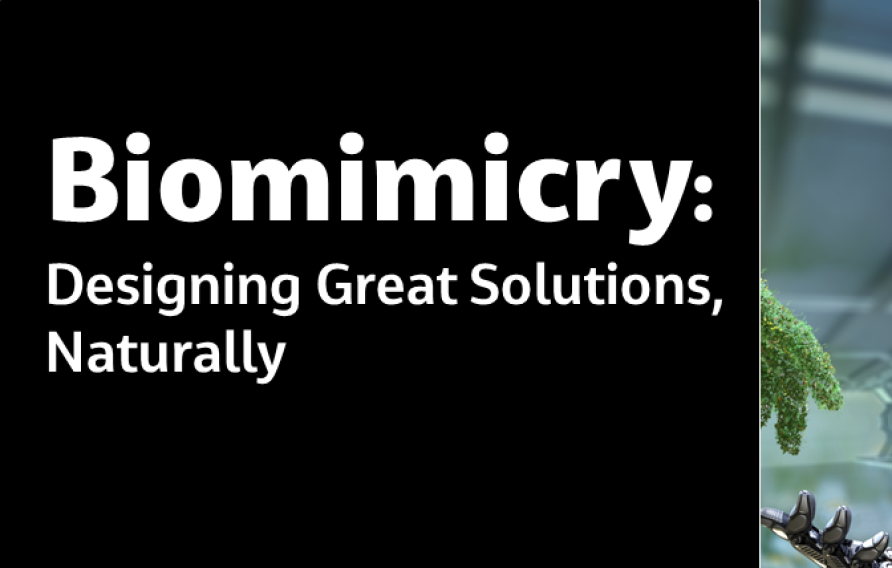
 Podcasts
PodcastsBiomimicry: Designing Great Solutions, Naturally
For this episode of If/When, we explored the exciting world of biomimicry and why it matters for the Built Environment, with special guests Managing Director, Biomimicry 3.8 Nicole Hagerman Miller; Jacobs Vice President – Global Market Director for the Built Environment Monte Wilson; and Jacobs Senior Consultant – Sustainability & Resiliency Chris Allen.
-
 Page
PageDelivering Resilience
It’s time to think differently about the future — about how we prepare for and respond to natural, societal and economic risks. Jacobs delivers comprehensive infrastructure, technology and intelligence solutions to help governments, cities and private sector clients survive, recover, adapt and thrive regardless of the chronic stresses and acute shocks they experience.
-

 Page
PageSolving the climate challenge
Climate change is truly one of the greatest challenges and opportunities of our generation. There isn’t an area of the world, a business or government, a community or individual that won’t be impacted. How we collectively respond will determine the ultimate success in building a healthier, safer, more sustainable and resilient future for all people and our planet.
References
[1] United Nations. (n.d.) For a livable climate: Net-zero commitments must be backed by credible action. Accessed from UN website: https://www.un.org/en/climatechange/net-zero-coalition
[2] NRDC. (2021). Paris Climate Agreement: Everything You Need to Know. Accessed from NRDC website: https://www.nrdc.org/stories/paris-climate-agreement-everything-you-need-know#sec-whatis
[3] Accenture. (2022). Accelerating global companies towards net zero by 2050. Accessed from Accenture website: https://www.accenture.com/content/dam/accenture/final/capabilities/strategy-and-consulting/strategy/document/Accenture-Net-Zero-By-2050-Global-Report-2022.pdf#zoom=40
[4] Accenture. (2022). Accelerating Global Companies Toward Net Zero by 2050. Accessed from Accenture website: https://www.accenture.com/content/dam/accenture/final/capabilities/strategy-and-consulting/strategy/document/Accenture-Net-Zero-By-2050-Global-Report-2022.pdf#zoom=40
[5] Business For Nature. (n.d.) #MakeItMandatory. Accessed from Business for Nature website: https://www.businessfornature.org/make-it-mandatory-campaign#MIM-signatory-list
[6] Deloitte. (2022). The Turning Point: A Global Summary. Accessed from Deloitte website: https://www2.deloitte.com/content/dam/Deloitte/global/Documents/gx-global-turning-point-report.pdf
[7] World Economic Forum & AlphaBeta. (2020). New Nature Economy Report II - The Future of Nature and Business. Accessed from WEF website: https://www.weforum.org/reports/new-nature-economy-report-ii-the-future-of-nature-and-business/
[8] World Economic Forum & PwC. (2020). Nature Risk Rising: Why the Crisis Engulfing Nature Matters for Business and the Economy. Accessed from WEF website: https://www3.weforum.org/docs/WEF_New_Nature_Economy_Report_2020.pdf
[9] World Meterological Organization. (2021). Weather-related disasters increase over past 50 years, causing more damage but fewer deaths. Accessed from WMO website: https://public.wmo.int/en/media/press-release/weather-related-disasters-increase-over-past-50-years-causing-more-damage-fewer
[10] Deloitte. (2022). The Turning Point: A Global Summary. Accessed from Deloitte website: https://www2.deloitte.com/content/dam/Deloitte/global/Documents/gx-global-turning-point-report.pdf
Future Foundations.
Co-creating the world to come

From developing climate resilience and transitioning to a low-carbon future, to modernizing and transforming infrastructure, governments and businesses face critical challenges. How they respond will define our future.
As our clients navigate these challenges, we help them think differently – working together to pioneer tomorrow's infrastructure solutions and build the foundations for a prosperous, secure future.













































